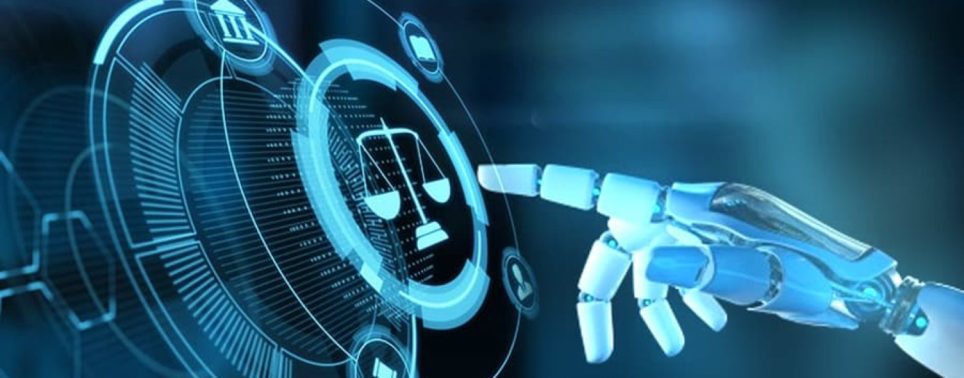Law enforcement agencies and security experts have developed various technologies to aid their fight against crime. These technologies include CCTV surveillance systems, biometric technologies, GPS tracking systems, Automated License Plate Recognition (ALPR), forensic technologies, crime mapping, gunshot detection systems, predictive policing, drones, and social media monitoring. CCTV cameras are widely used in public places and come equipped with facial recognition features, allowing for quick identification and tracking of suspects. Biometric technologies like iris scanners and fingerprint readers control access to restricted areas and identify suspects in investigations. GPS tracking systems locate stolen vehicles and track suspect movements. ALPR cameras installed on law enforcement vehicles compare license plate numbers with databases. Forensic technologies like DNA profiling help link suspects to the crime scene, while predictive policing uses data analytics and machine learning to prevent crime before it happens. Drones are useful in monitoring crime hotspots, while social media monitoring tracks potential threats and cyberbullying. These technologies have helped law enforcement agencies to become more effective in combating crime, and further innovations are expected in the future.
10 Technologies Used in Fighting and Preventing Crime
In the fight against crime, law enforcement agencies and security experts have come up with several technologies that have been effective in both preventing and combating crime. These technologies range from advanced surveillance systems to innovative forensic tools that help law enforcement teams to solve even the most complex of cases. In this article, we will explore ten of the most significant technologies used in the fight against crime.
1. CCTV (Closed Circuit Television)
CCTV is one of the most widely used technologies in crime prevention and detection. An extensive network of CCTV cameras installed in public places like shopping malls, airports, and streets has proven to be an effective tool in capturing criminals and gathering evidence. With the advancement of technology, modern cameras now come equipped with facial recognition features, enabling law enforcement agencies to quickly identify suspects and track their movements.
2. Biometric Technologies
Biometric technologies have been instrumental in strengthening the security of sensitive areas like banks, military bases, and research centers. Iris scanners and fingerprint readers are two of the most common biometric technologies used to control access to restricted areas. In crime investigation, biometric technologies are used to identify suspects and match them with the existing criminal database.
3. GPS Tracking Systems
In law enforcement and security, GPS tracking systems are crucial in tracking stolen vehicles and locating suspects on the run. These systems allow law enforcement agencies to monitor the movement of vehicles and individuals in real-time, making it easy to locate them and prevent crimes like kidnappings and car thefts.
4. Automated License Plate Recognition (ALPR)
ALPRs are technologically advanced cameras that use optical character recognition to capture license plate numbers and compare them with databases of stolen vehicles, outstanding warrants, and other criminal activities. The cameras are installed on police cars and other law enforcement vehicles, making it easy for officers to identify any vehicles of interest while on patrol and take appropriate action.
5. Forensic Technologies
Forensic technologies like DNA profiling, fingerprint analysis, and ballistics testing have revolutionized criminal investigations. These technologies help investigators to link suspects to the crime scene and gather evidence that can be presented in court. In many cases, forensic evidence is the key to proving guilt or innocence and obtaining a conviction.
6. Crime Mapping
Crime mapping is a technology that helps law enforcement agencies to identify crime hotspots and patterns. Through data analysis and mapping, law enforcement officials can identify areas that require increased monitoring or deployment of officers. The technology also allows agencies to identify trends in criminal activity, enabling them to develop more effective crime prevention strategies.
7. Gunshot Detection Systems
Gunshot detection systems are audio sensors that can detect the sound of gunshots and pinpoint the location of the shooter. These systems are often installed in high-crime areas and are especially useful in urban areas where it can be difficult to ascertain the location of the gunshot. Once a gunshot is detected, the technology alerts law enforcement officials, who can respond quickly to the incident.
8. Predictive Policing
Predictive policing is a technology that uses data analytics and machine learning to predict where crimes are likely to occur. By analyzing crime data and patterns, law enforcement agencies can deploy officers to areas of high crime risk and prevent criminal activity before it occurs. The technology has proven to be effective in reducing crime rates in areas where it has been deployed.
9. Drones
Drones have several uses in law enforcement and security, including surveillance, search and rescue, and disaster response. In law enforcement, drones have been used to monitor high-crime areas, track suspects, and gather evidence. The technology is also useful in conducting aerial searches and reconnaissance missions in areas that are difficult to reach by ground.
10. Social Media Monitoring
Social media monitoring is a technology that allows law enforcement agencies to track social media platforms to identify potential threats, criminal activity, and public safety concerns. The technology is particularly useful in identifying and monitoring potential terrorist threats, hate speech, and cyberbullying.
Conclusion
In conclusion, technology has been a vital tool in fighting and preventing crime. From CCTV cameras to biometric technologies, forensic tools, and social media monitoring, these technologies have helped law enforcement agencies to become more effective in combating crime. As technology continues to advance, it is expected that more innovative solutions will be developed to make our communities safer.
